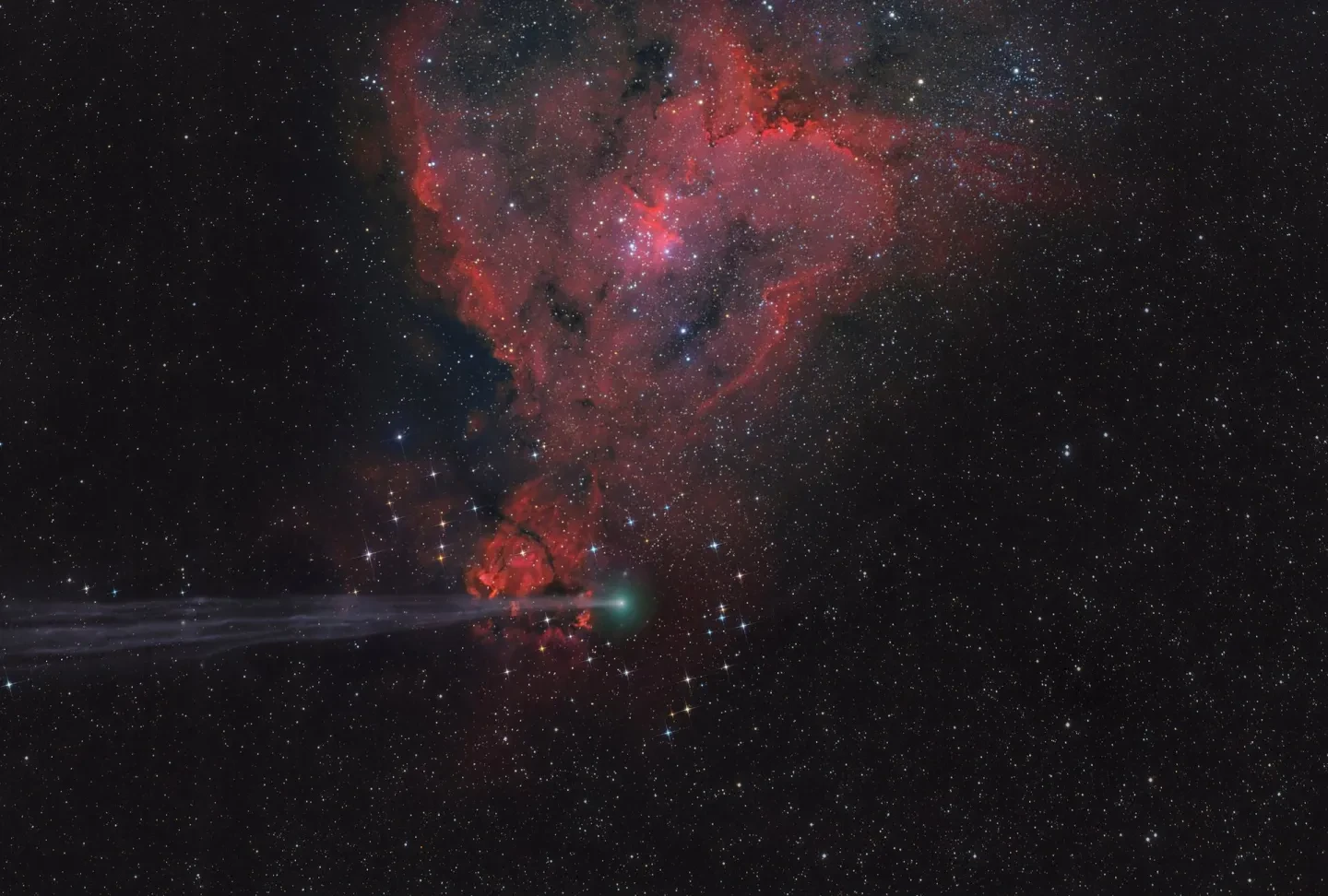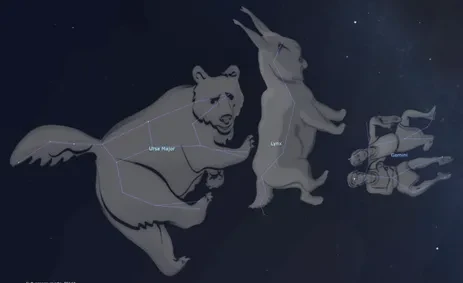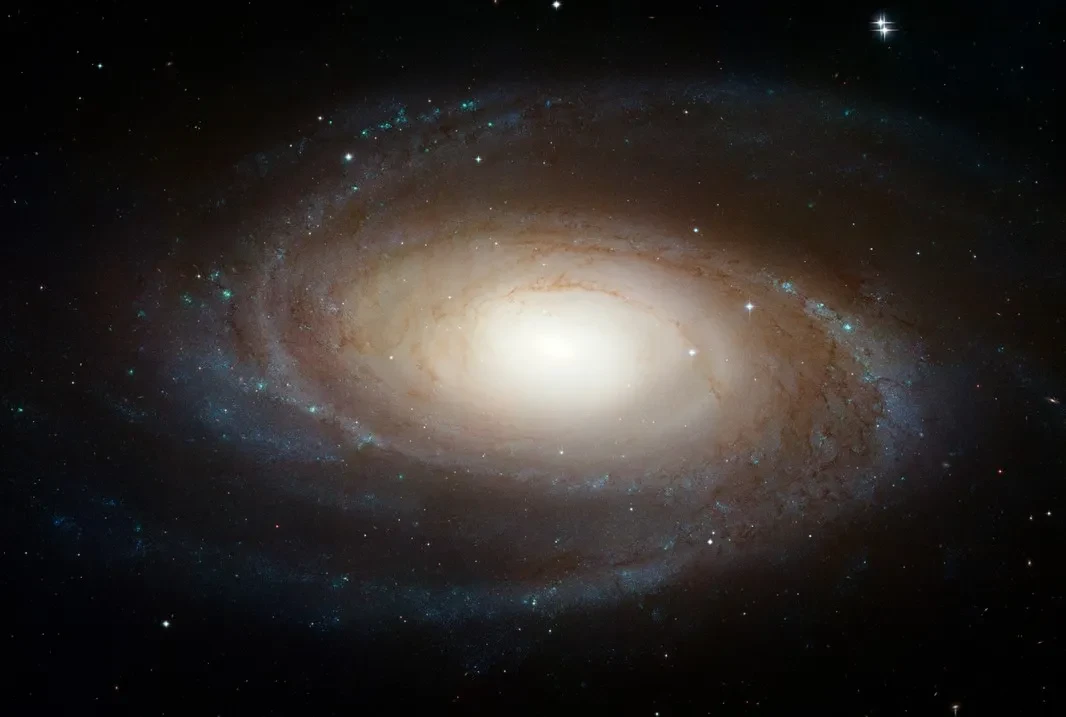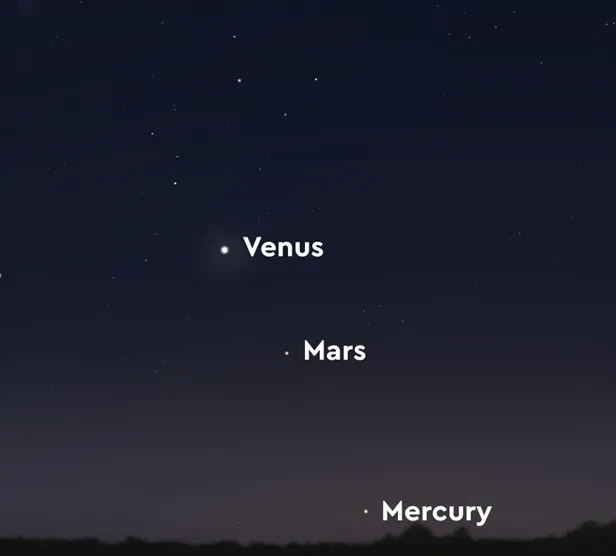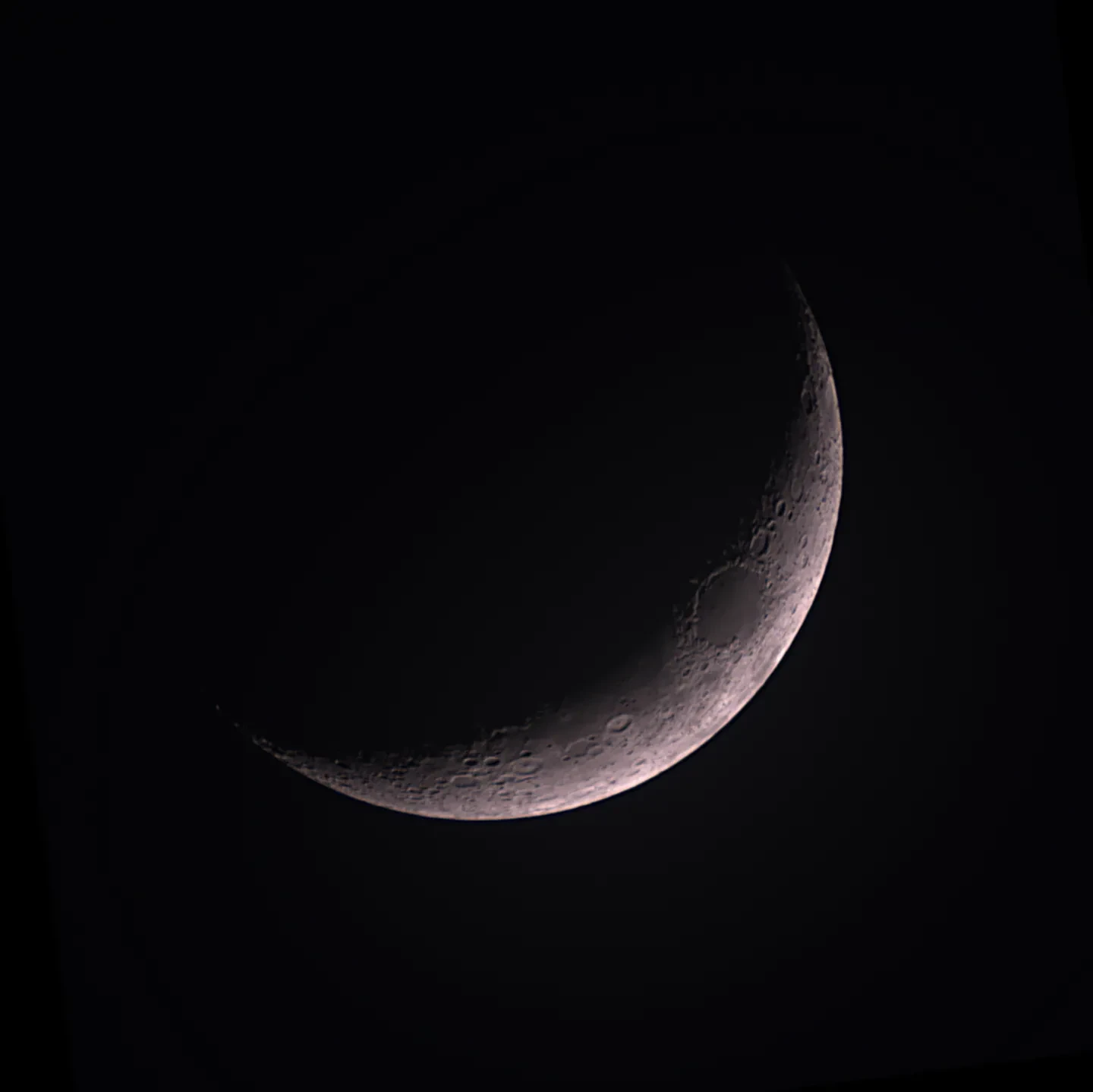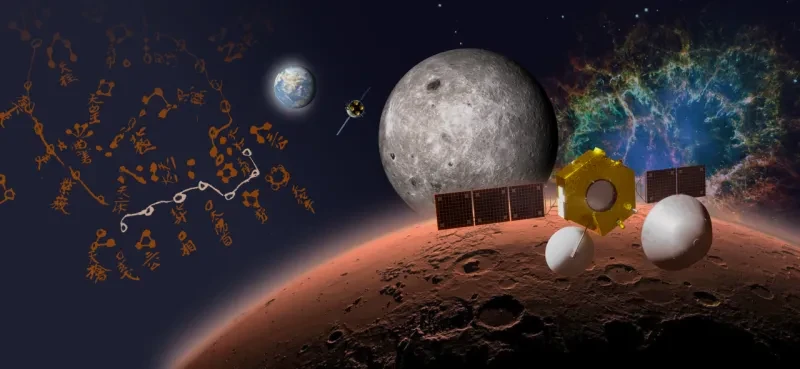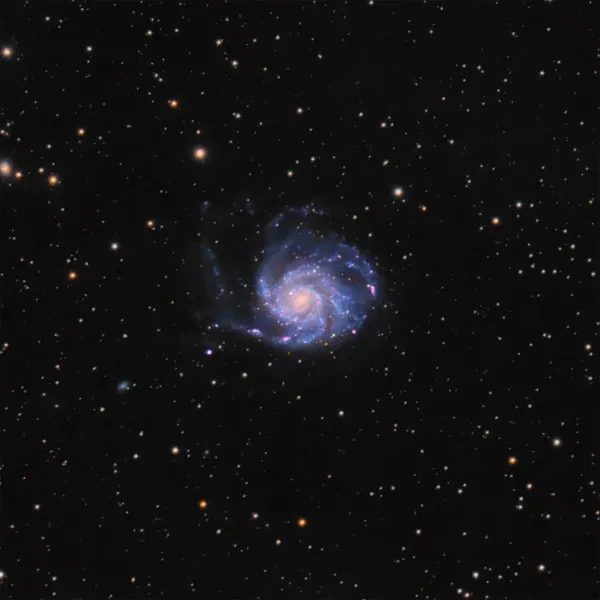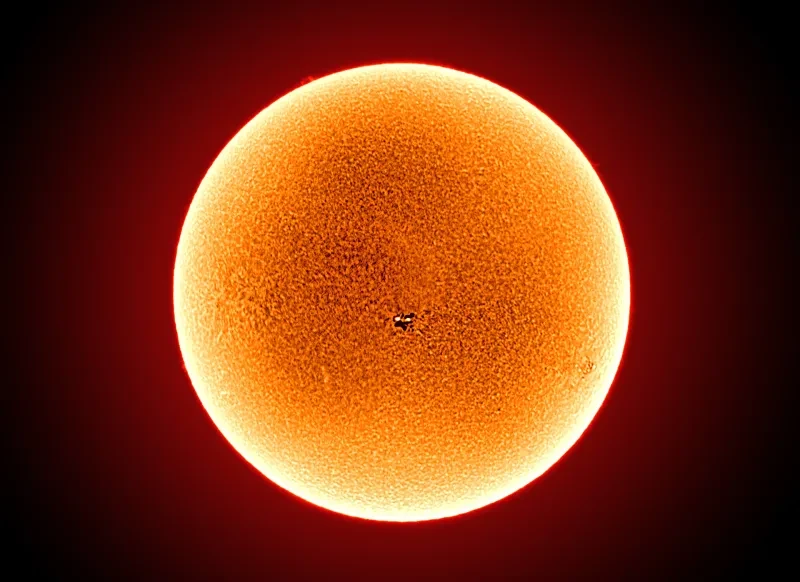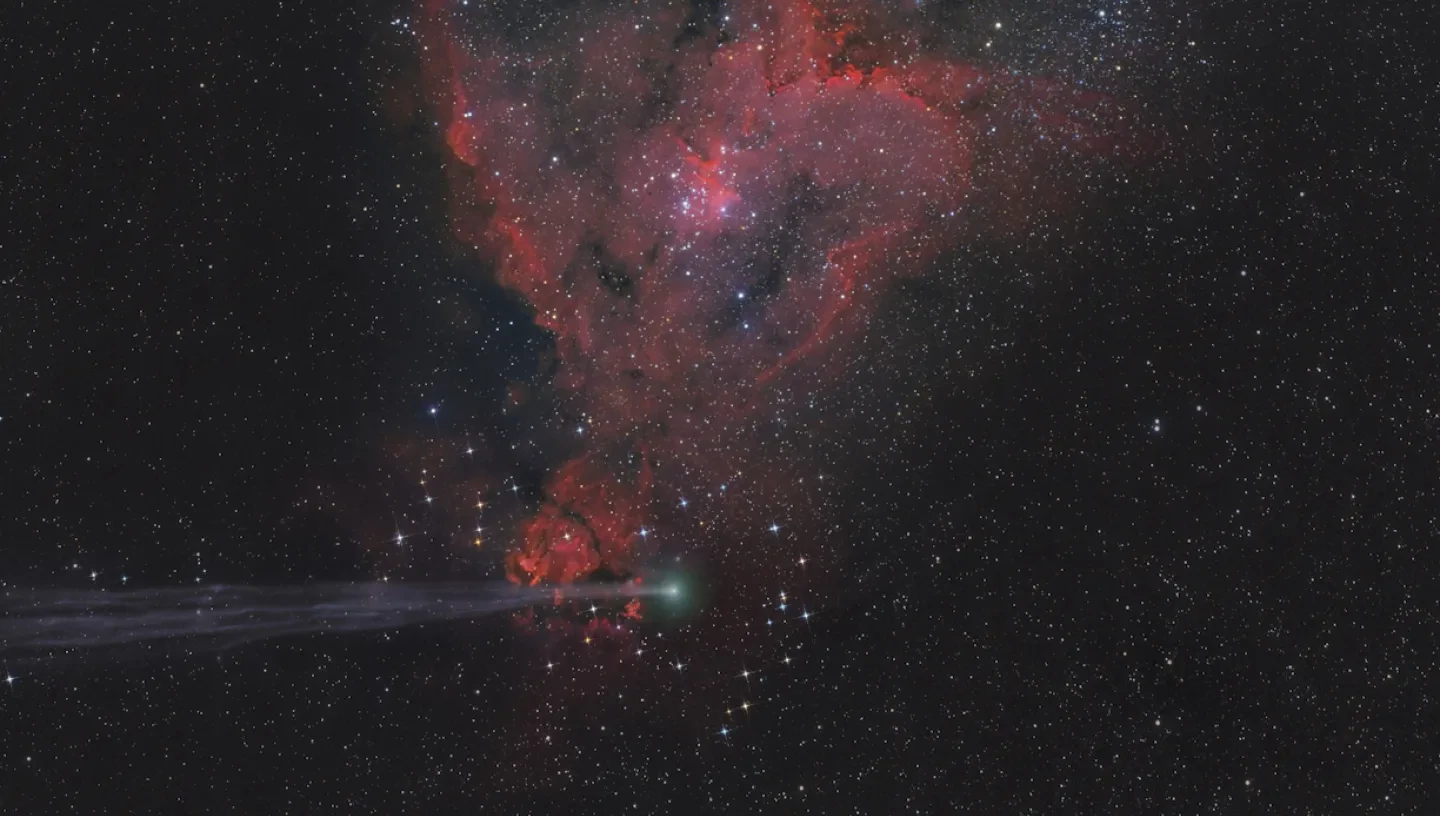
Discover what to see in February's night sky, including the Lynx constellation, some stunning spiral galaxies and a planetary conjunction for those in the Southern Hemisphere.
Top three things to see in the night sky in February 2024:
- Throughout the month - the Lynx constellation is visible throughout the night
- 14 February - a Valentine's-themed target, the Heart Nebula
- 22 February - a planetary conjunction for the Southern Hemisphere
Look Up! Podcast
Subscribe and listen to the Royal Observatory Greenwich's podcast Look Up! As well as taking you through what to see in the night sky each month, Royal Observatory astronomers pick two space news stories to talk about.
In February's episode, available below, we talk about the changing colours of the planets and some updates on recent lunar missions. At the start of February, join us on X (@ROGAstronomers) and let us know what you think about the true colours of the ice giants.
Valentine's Day-themed astronomy
Venus is disappearing from our morning skies this month, and won’t be visible again until the end of 2024, when it will appear in the winter evenings close to sunset. Fittingly, the last time it’s possible to view Venus will be in mid-February, right around Valentine’s Day. Venus is the Roman goddess of love, the equivalent of Aphrodite in ancient Greek mythology, and so if you want a romantic stargazing object, this is the one. Look close to the horizon in the southeast early in the morning before the Sun rises for the best view, and wave goodbye to the goddess of love for the next few months.
If you’re after a deep sky object with a similar theme you can use a telescope to find the Heart Nebula. Unlike most nebulae, it’s fairly easy to see where the name of this stellar nursery originated. These clouds of gas and dust within the constellation of Cassiopeia are 7,500 light years away, and a popular target for astrophotographers as they appear to form a cartoon heart shape in the sky.
The eyes of a Lynx
We’ve got a challenge for keen-eyed stargazers this month, if you’ve got a chance to look up at a very dark sky. February is a good time to observe Lynx, a faint constellation which is less known than its neighbours in the sky, which include Ursa Major and Gemini.
This constellation was formed in the late 1600s by Johannes Hevelius, who reportedly said you’d need ‘the eyes of a lynx’ to spot it. This isn’t an option for viewers in London or areas with similar levels of light pollution, but is possible for those with darker skies!
Lynx will be around the zenith (so the highest point in sky) directly overhead from around 9 to 10pm throughout February, although this constellation is circumpolar at this time of year and so visible whenever it is dark enough. The main shape of the constellation forms a bent line of stars across the sky, in between Dubhe and Merak, the pointers of Ursa Major, and Castor and Pollux, the twins of Gemini.
What Johannes didn’t know when creating this was that at least 6 of the stars in this constellation have planetary systems of their own. Exoplanets had been theorised as early as the 1500s, but not confirmed until the early 1990s. Imagine what we might find up there 500 years from now!
Lunar New Year
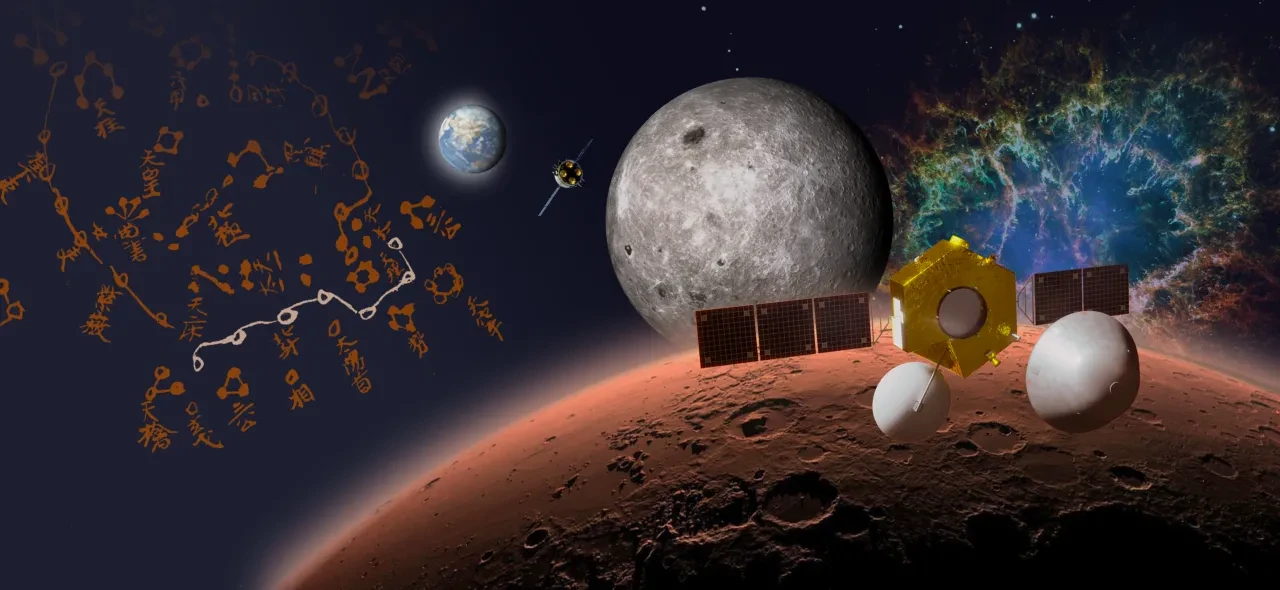
The Lunar New Year falls on 10 February this month, with celebrations across the world occurring in the weeks preceding and following this date. The Lunar New Year, as you may have guessed from the name, is based on a lunar calendar. Specifically, it is the night of the 2nd new Moon following the winter solstice.
So on the night of 10 February, you won’t be able to see the Moon in the sky as it is inbetween the Earth and the Sun and so only the far side, not viewed from the Earth, is illuminated by the Sun. This means that nights around this time will be particularly dark without the light from the Moon washing out the fainter stars, and so amongst the festivities it could also be a good time for some stargazing.
If you wanted some more Lunar New Year themed astronomy content, we'll be running a special Lunar New Year edition of our Chinese Astronomy show on 3 February, for more information see our webpage.
Spiral galaxies
Bode’s galaxy, also known as M81, reaches its highest point in the sky (its culmination) around midnight throughout February. With a magnitude of 6.9 you’ll need a pair of binoculars or a telescope to view it, but if you catch a glimpse, you’ll be well rewarded with a view of this ‘grand design’ spiral galaxy over 12 million light years away. Grand design spirals have prominent and well-defined spiral arms, as opposed to more subtle spiral arms on galaxies like Caldwell 48, known as ‘flocculent’ spirals.
If you want to compare the two types of galaxy, Caldwell 48, also known as NGC 2775, will be visible in the sky as well this month within the constellation of Cancer. If you’re looking for these two, around midnight during the first half of the month is ideal as the waxing Moon will be brightening the skies at this time of night towards the end of February.
Southern Hemisphere early risers
If those in the Southern Hemisphere want to wake up really early in the morning and see the planets and the Moon align, have a look at the eastern sky on 9 February at around 5.30am. High in the sky you’ll see the crescent Moon, and then 20 degrees below this Venus will be shining brightly. Below Venus will be Mars, much fainter but still visible to the naked eye.
Closest to the horizon is Mercury. This makes Mercury a more difficult planet to spot compared to Mars and Venus – it’s fainter, closer to the horizon where trees and buildings may eclipse your view, and closest to the Sun which may wash out this faint point of light as it rises. You could have a look at the planets with a telescope if you have one, but as always please be careful not to look at the Sun.
Later in the month, on the 22nd, Mars and Venus will approach each other in the sky, appearing less than one degree apart at 5.30am in the south east. There will not be an occultation on this occasion, which is where one planet appears to pass in front of the other from our point of view, but when any two objects in the night sky appear very close to each other in this way, this is known as a conjunction.
The Moon's phases in February 2024
Last Quarter: 2 February (23:18)
New Moon: 9 February (22:59)
First Quarter: 16 February (15:01)
Full Moon: 24 February (12:30)
Stargazing tips
- When looking at faint objects such as stars, nebulae, the Milky Way and other galaxies it is important to allow your eyes to adapt to the dark so that you can achieve better night vision.
- Allow 15 minutes for your eyes to become sensitive in the dark and remember not to look at your mobile phone or any other bright device when stargazing.
- If you're using a star app on your phone, switch on the red night vision mode.
Planetarium Shows
Join us for live planetarium shows
Header Image: The Arrow Missed the Heart © Lefteris Velissaratos, Astronomy Photographer of the Year Planets, Comets and Asteroids Winner 2015
